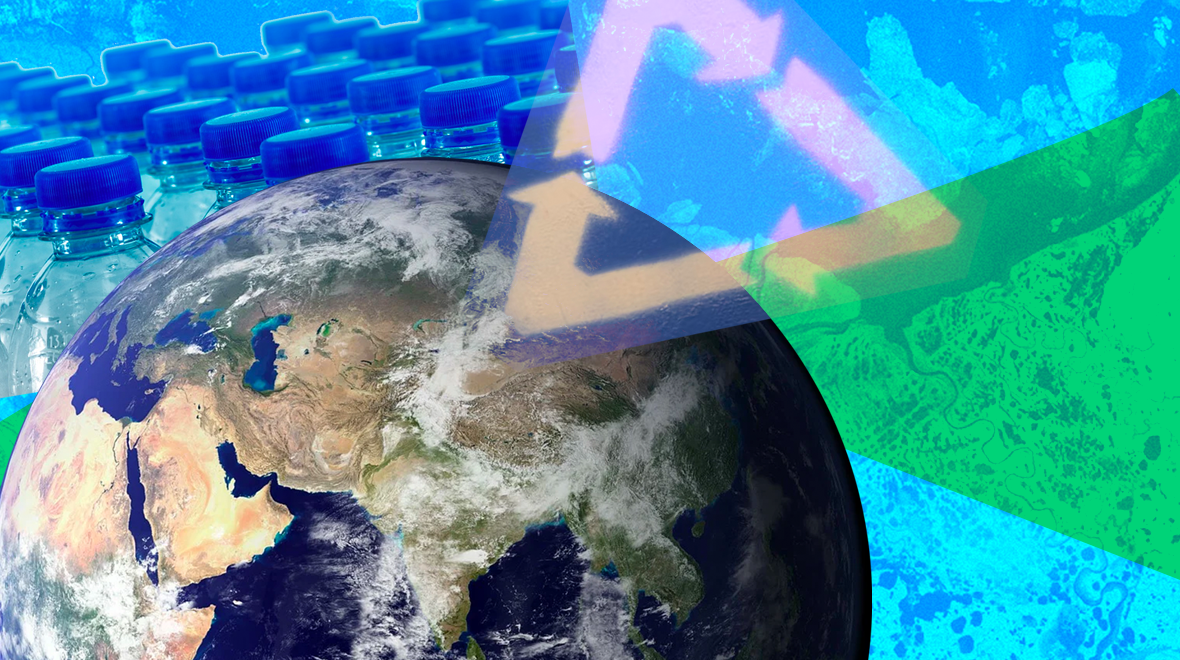The problem of poorly managed plastic waste is not new. Solutions exist, but the scale and breadth of the problem is such that progress has been elusive, with the short-term benefits of plastic often pushing out considerations about longer-term disposal. Nowhere is this mismatch more evident than in the area of packaging.
Plastic packaging is cost-effective and convenient. It extends the life of food and prevents disease. However, the upsides of plastic packaging are accompanied by environmental impacts. Plastic packaging accounts for around half of global plastics production and a very large proportion of the litter that we see around us every day. In addition, the climate implications of plastics production and disposal are considerable and are now drawing attention in a world striving to reach net zero greenhouse gas (GHG) emissions within 30 years.
The challenge before us is to make real progress on both these problems, while respecting the fact that plastics remain critical in every part of our lives and in many cases have a smaller environmental impact than non-plastic substitutes. They are also typically less expensive than their alternatives, which means that substitutions may adversely affect poorer populations.
The way forward
The way forward must be to change the way we create, use, and dispose of plastics so that we can retain their myriad benefits while limiting the harms that have typically been associated with their use.
This report proposes two pathways. The first is to change the trajectory of plastic packaging use so that the size of the challenge does not overwhelm the possible solutions. Here, establishing clear timelines, scopes, and targets is critical. The second is to break the link between plastic use and the waste and emissions challenges of single-use, linear plastics models. The way to do this is through massively increased recycling—which itself must build on much better waste collection and sorting systems—while also pushing technical boundaries to extend and decarbonize the processes employed. These are the two sides of the circular economy for plastic packaging.
Across the range of plastics applications, the relative priorities for action will vary. For those types of plastic packaging that are readily recycled, such as polyethylene terephthalate (PET) and rigid high-density polyethylene (HDPE), the imperative is to increase actual recycling rates and to decarbonize production wherever possible. For other polymers there must be a greater emphasis on either reduction—through substituting in more recyclable plastic types/alternative materials, through reuse, and through absolute reductions in packaging volume—or on technological innovation to identify new recycling possibilities.
To flourish, a circular economy requires a policy environment that creates the right opportunities and incentives. It also requires the active engagement of all segments of society from consumers, through small-scale collection businesses, right up to the large multinational corporations that form the backbone of the plastics manufacturing industry and dominate in food and beverages. Finance is key and has sometimes been a stumbling block for sustainable plastic packaging ecosystems in the past, but as the circular economy takes shape and companies proactively seek investments that benefit the environment, we are seeing this begin to change. Stakeholders must work together to create a system that inspires trust, calls out bad behavior, and strives toward collective circular goals—including furthering the cause of environmental justice.
Revitalized material collection systems and new recycling facilities can create jobs and other benefits for communities. Eliminating plastic waste disproportionately benefits poorer groups, as it is typically in their backyards that waste accumulates and, in the longer term, it is they who are most vulnerable to the effects of climate change. Enhancing the sustainability of plastics systems can also improve conditions for domestic industries including agriculture, tourism, and shipping.
Time for Asia to lead
Asia lies at the heart of the global plastics economy. Plastic use and waste management systems vary enormously among Asian countries but, in aggregate, the continent has up until now been considered a driver of problems rather than solutions. There are indeed deeply embedded challenges in how many Asian countries have used and managed plastic packaging, although there are also examples of innovative and scalable solutions in the region.
This report demonstrates that it is time for Asian governments, companies, and populations to change their approach to the use, production, and management of plastic packaging. As this begins to happen, so the narrative itself will shift, turning a long-established problem into an advantage. In a G-Zero world where global leadership is absent, there is an even larger opening for Asia to become the global authority on plastics. If more Asian countries can overcome the problems associated with plastic packaging use and poor end-of-life management, other countries can follow their lead, establishing a global pathway forward. Conversely, there can be no solution on global plastics that does not prioritize Asia.
Now is an opportune time for the continent to move forward to establish its leadership potential. The global fragmentation that we see around us today creates opportunities for different countries—or groups of countries from the region acting together—to move ahead. The scope for Asian countries to work together to build either a pan-Asian approach on plastics, or to be the driver of a global treaty on plastics, is growing.
Asian consumers may not yet be as environmentally motivated as their counterparts in the West, but Asian companies and multinational corporations that sell their goods in Asia have an opportunity to move ahead, driving a race to the top ahead of local consumer pressure. We are already seeing this impetus in multiple Asian corporate commitments around sustainability in general, and plastic use in particular. Whether driven by the demands of the finance sector or companies' own recognition of the need to change the way they operate, such commitments are an important starting point.
The challenges are known, and the building blocks are in place. Now is the time for real action, both individual and collective, to unleash the potential for a sustainable plastics economy in Asia and the world.
Read the Report

